 Imagine the most vivid, fierce color of blue, its intensity shouting beyond the natural world, conjuring fantasy, magic and surrealist dreams. This is the color of the home into which Mexico’s most famous – and tormented – woman painter, Frida Kahlo, was born, lived with her husband Diego Rivera, and died, just after her 47th birthday in 1954.
Imagine the most vivid, fierce color of blue, its intensity shouting beyond the natural world, conjuring fantasy, magic and surrealist dreams. This is the color of the home into which Mexico’s most famous – and tormented – woman painter, Frida Kahlo, was born, lived with her husband Diego Rivera, and died, just after her 47th birthday in 1954.
I had viewed a traveling exhibition of her work at the Museum of New Mexico in 2007, and seen the movie, “Frida,” staring Selma Hayek, so I knew of her polio as a child and the spine-crushing trolley accident that rendered her infertile and doomed to a life of chronic pain, about which she painted and wrote. But it was not until visiting her home, “Casa Azul,” in Mexico City’s upscale area of Coyoacán, did I get a real feeling for the woman and her life.
On a recent Sunday morning, I overlooked the crowds, the cordoned-off alarm areas, the numerous security guards, the meticulous exhibition of her art work and tidy placement of personal objects to observe the architecture, photos, writings, furniture, personal possessions and treasures to imagine what it might have been like when she and Diego inhabited what has been a museum since 1957.
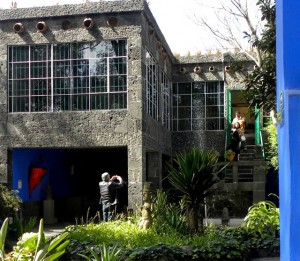
With her back problems, she must have had trouble negotiating the stone stairs from her studio and bedroom to the expansive gardens and, no doubt, there was a chill in winter that could not have been displaced by the two massive Aztec-inspired stone fireplaces designed by Diego.
Tranquil as it is now, there must have been the yapping of their many hairless dogs and the screeching of her beloved spider monkey, Fulang Chang. (Her 1942 “Self-Portrait with Monkey and Parrot” sold at Sotheby’s for $3.2 million in 1995). As affluent Bohemians, there was, no doubt, the continual comings and goings of maids, cooks, gardeners, in addition to many friends and associates, and the typical Mexican intrusion by street vendors selling tortillas, tamales, vegetables, flowers and wood.
Her studio table and articulating easel display neatly-placed paints, and the wall is lined with orderly books. Yet I imagine her work room was often chaos, strewn with angry drawings, and half-finished paintings abandoned out of frustration and pain. Her life was not neat, and yet her passion for it was relentless.
She wrote: “Cada es una segunda de la vida que pasa, huye y no se repite. Y hay en ella tanta intensidad, tanto interes, que el problema solo saberla vivir. Que cada uno resuelba como pueda.” (Roughly translated: Each second of life passes, and is not repeated. And in it there is such intensity, so much interest, that the only problem is knowing how to live it. Each one resolves this as he can).
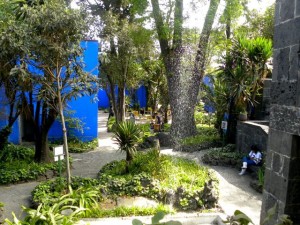
In the quiet, fastidiously arranged dining room and kitchen, I can hear the couple’s angry, hurtful words spilling and breaking upon the hand-painted terracotta dishes and jade-colored pots from Michoacan, and also the impassioned conversations about politics, philosophy and the nature of art.
The grounds now include a busy coffee shop and store with the ubiquitous products sporting Frida’s name, face and art, commiserate with her iconic cult status. Yet, wandering among the trees, plants, artifacts and art displayed upon the exterior walls, I envision this environment as a nurturing sanctuary, sanatorium and retreat from the world perennially at war, or recovering fitfully from the wounds and scars of it.
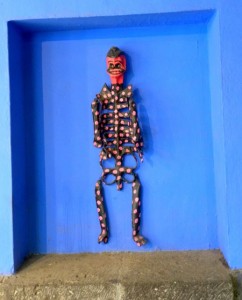
Here, for her whole life, was Frida’s home, embodying the exuberance of a richly colored and textured life, and the pain endured in living it.
Struck by the beauty and tranquility of Casa Azul, countered with the pain and ferocity of Frida’s life, I wondered what my home, possessions and work, if frozen in time and place, might say about the life I’ve lived?
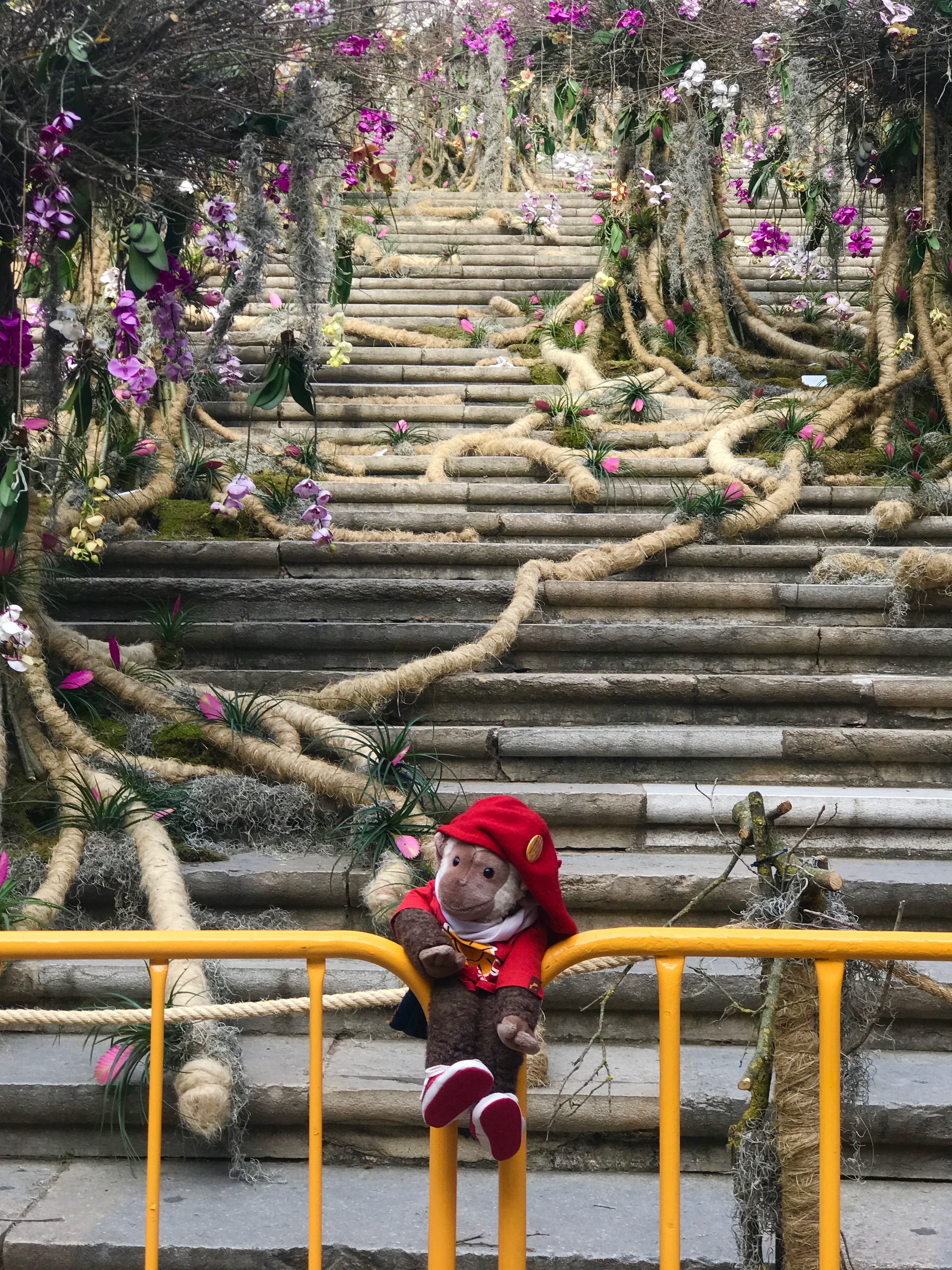
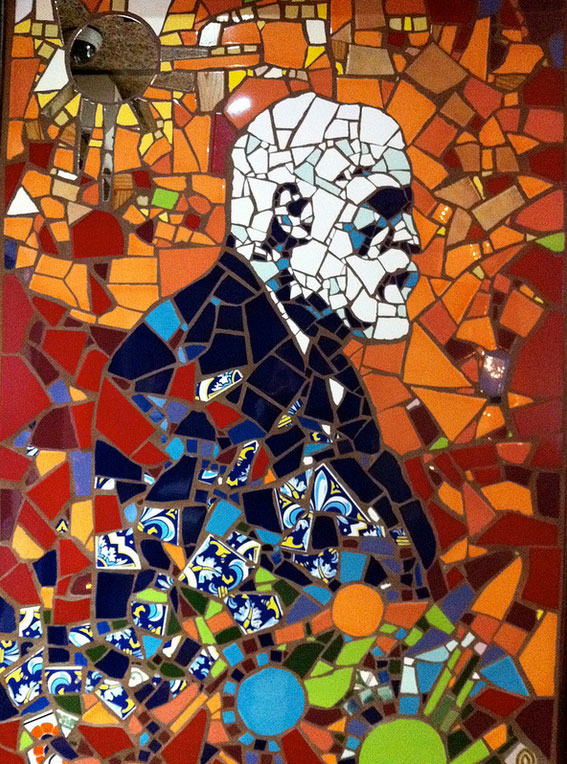
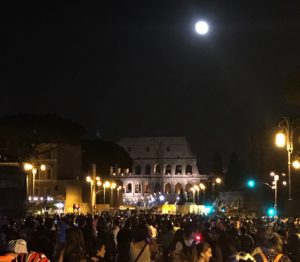

“Cada es una segunda de la vida que pasa, huye y no se repite. Y hay en ella tanta intensidad, tanto interes, que el problema solo saberla vivir. Que cada uno resuelba como pueda.” Well Put
this is so observant and evocative. thank you. i remember going there and seeing her little embroidered pillow. i thought: she was, emotionally, a little girl. you bring back great memories and add many details i overlooked.
I studied Frida in university and her work – along with the other surrealists in the movement – changed both my artistic and personal lifes forever. I came to appreciate that the surreal and the real are both valid parts of life and to enjoy both with the same intensity! UGH – now I want to get back to Mexico more than ever!!! Keep blogging sister!
Hi Aysha,
I love your photos!!! This is a brilliant idea; thanks for sharing.
Have fun,
Michelle
Casa azul has long been one of my favorite spots in all of Mexico: traditional folk art and primary-colors layered with pathos–so much like the artist who lived there–and like Mexico itself. I especially love how you take on Frida’s setting and use it to contemplate your own. Beautiful post!
Aysha,
How well you bring the past in to the present. You evoked the wonder and magic of Frida’s life. I adore her work so much. I went to one of the places the lived in Guanajuato but it was not this famous house. The brilliance of the colors in your pictures is awesome. thanks again!
Thank you all for your comments! It’s interesting how Frida, who was not so famous during her lifetime, has touched the hearts of so many, especially women. Her pain, perseverance and honesty – although sometimes difficult to bear even as an observer – are inspiring. I am reminded that no matter what, there is beauty and joy to be found, embraced, appreciated and creatively expressed.
Pingback: Mexico City High Points
Wonderfuul article! We will be linking to this great post on our site.
Keep up the good writing.